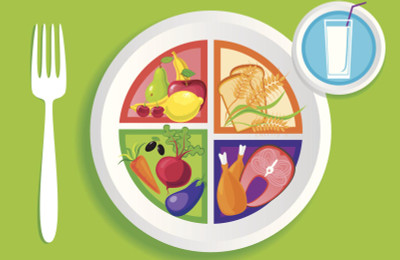You may have heard recently that there are new nutrition guidelines that are about to come about this year. I believe change is good, and I think you’ll agree these changes are long over due!
First of all, what are the U.S. dietary guidelines? The dietary guidelines are made up by The Dietary Advisory Committee, which consists of a panel of 14 nutrition, public health and medical experts. The group recommends specifics for a healthy lifestyle attained through one’s diet every five years.
The recommendations are put into a report, a rather lengthy report at that – this year’s report tallies 570 pages – and must wait a 45-day period for revisions, prior to finalization. Both the U.S. Department of Agriculture and the U.S. Department of Health and Human Services consider the committee’s recommendations and issue the finalized report once complete.
The main focus is essentially: to increase the general public’s consumption of fruits and vegetables, increase affordable and accessible methods of physical activity, and to increase support of school and corporate nutrition programs.
What’s new this year? Well, a lot! The focus I believe is on three key areas in this year’s recommendations among other things: sugar, cholesterol and meat free.
Sugar: The new focus on added sugars that usually add empty calories, like those found in sugary drinks, and the panel suggests 200 calories a day maximum, or 10 percent of daily calories. That equals to about the amount in one 16-ounce sugary drink according to the committee. Currently, Americans on average get about 13 percent of their calories from added sugar, or 268 calories, according to the committee. Children and young adults typically consume more added sugar and recommendations are to keep it at 10 percent, which is the target. This type of sugar is not to be confused with sugar that is naturally occurring, such in fruit and milk.
Dietary cholesterol: What was once ‘off limits’ or of great concern, such as eggs and shellfish, is no longer considered to be a “nutrient of concern for overconsumption,” according to report compiled by the committee. Food with cholesterol doesn’t appear to raise blood cholesterol levels. However, saturated and trans fat do contribute to high blood cholesterol and is bad for heart health. This recommendation follows medical research showing the amount of cholesterol in your blood is more complicated than what it was once thought. The panel doesn’t provide a specific recommendation for how much cholesterol or eggs one should consume, but it does follow previous years report with limiting saturated fats to 10 percent of total calories.
My late, dear husband, Kelly, was right and way ahead of his time with his views on cholesterol in food (as usual with many things). He never thought eating an egg would increase blood cholesterol in most people. He thought it was rather ‘silly’ to shy away from such a perfect food. One of his favorite meals was eggs, and was always one of the first foods we fed our 5 kids when they were babies.
Meat free: The panel recommends consuming more vegetables, fruits, whole grains, legumes, nuts and seeds for health benefits. They suggest a plant-based diet is “more health promoting and is associated with less environmental impact” than the current American diet, which is typically high in meat. They do not endorse entirely eliminating a food group, and say, “no food groups need to be eliminated completely.”
There were many other recommendations in the 500-plus-page report, but these three are the ‘big ones’ that have kept the media and public talking. It will be interesting to see what the final recommendations will be, so stay tuned in the coming weeks to see how it shapes up.
Start Your Healthy Journey Today!
Order NowFind More By Category








 Weight Loss
Weight Loss Health & Wellness
Health & Wellness Diabetes
Diabetes Heart Health
Heart Health Motherhood & Family
Motherhood & Family Dietary Restriction
Dietary Restriction Other Health Conditions
Other Health Conditions About SSHE
About SSHE


